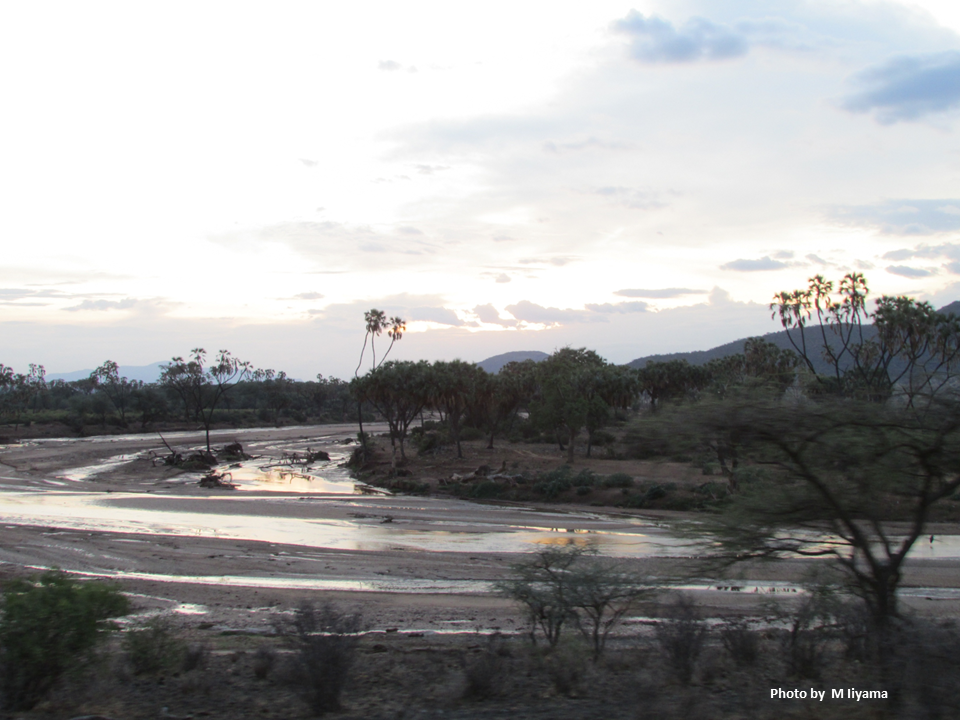Pick Up
1344. Irregularities in the Water Cycle

1344. Irregularities in the Water Cycle
Water underpins our societies, fuels our economies, and sustains our ecosystems. However, the world's water resources are becoming increasingly scarce, and at the same time, more serious water disasters are having a greater impact on people's lives and livelihoods.
The World Meteorological Organization (WMO)'s new report, the State of Global Water Resources 2024, highlights the increasingly irregular and extreme nature of the water cycle, with floods and droughts alternating, and the cascading impacts of water surpluses or shortages on economies and societies.
Hydrologic Conditions and Key Events in 2024
• Climate Conditions: 2024 was the hottest year in the 175-year record, with annual mean surface temperatures rising 1.55°C (±0.13°C) above the pre-industrial baseline (1850-1900). A pronounced El Niño event occurred in early 2024, leading to drought in northern South America and southern Africa. The Amazon River basin experienced severe drought, which intensified from April to June, peaked from July to September, and then partially abated from October to December. Below-normal precipitation conditions also persisted in northwestern Mexico, northern North America (including the Fraser and Mackenzie river basins), and southern and southeastern Africa (including the Orange, Limpopo, Zambezi, and Congo river basins). West-central Africa, the Lake Victoria basin in Africa, Kazakhstan and southern Russia, Central Europe, Pakistan and northern India, southern Iran, and northeastern China experienced above-normal conditions.
• River flow: In 2024, river flow deviated from normal levels in approximately 60% of the world's watersheds. In 2024, major river basins, such as the Danube, Ganges, Godavari, and Indus, in Central and Northern Europe and parts of Asia, including Kazakhstan and the Russian Federation, experienced above- or significantly above-normal flows. Meanwhile, a severe drought that began in late 2023 continued in South America, resulting in significantly below-normal flows in major river basins, such as the Amazon, São Francisco, Paraná, and Orinoco. In Africa, West African river basins (Senegal, Niger, Lake Chad, and Volta) experienced above-normal flows and were affected by severe flooding, while southern African river basins (Zambezi, Limpopo, Okavango, and Orange) recorded significantly below-normal flows.
• Soil moisture: Widespread soil moisture deficits were observed throughout South America in 2024, particularly in the Amazon and Paraná river basins, and in most African river basins. Nearly all African basins (Orange, Zambezi, Limpopo, Nile, and Congo) experienced below-normal or significantly below-normal soil moisture levels for most of 2024, while the Horn of Africa experienced above-normal or significantly above-normal soil moisture levels for most of the year.
• Glaciers: 2024 marked the third consecutive year of widespread ice loss across all glacier regions, with 450 million tonnes of ice lost, equivalent to 1.2 mm of sea level rise. Scandinavia, Svalbard, and Northern Asia experienced record ice loss, while some regions, such as the Canadian Arctic and the margins of Greenland, experienced more moderate losses. Most smaller glacier regions are above "peak water" (the threshold at which glaciers reach maximum runoff due to melting), and reduced summer mass balances suggest reduced runoff, although melt rates are still increasing in the southern Andes and the Russian Arctic. In 2024, Colombia's glaciers lost 5% of their area due to El Niño, reduced precipitation, and higher-than-normal temperatures.
• Significant Events: Europe, Africa, and Asia were hit hardest by unprecedented or significant extreme events. Most of these events were caused by excess water (i.e., flash floods, heavy rainfall, or associated landslides). Significant flooding occurred, killing more than 2,500 people, displacing 4 million people, and causing significant damage to infrastructure. Europe experienced its worst flooding since 2013, with one-third of its river network exceeding the "high" flood threshold. The Asia-Pacific region experienced record rainfall and tropical cyclones, killing more than 1,000 people. Brazil experienced devastating floods in the south, killing 183 people, and the Amazon basin continued to experience drought in 2023, affecting 59% of the country, while experiencing extreme weather events.
(Reference)
WMO (2025) State of Global Water Resources Report 2024,
https://doi.org/10.59327/WMO/WATER/2024
Contributor: IIYAMA Miyuki, Information Program
